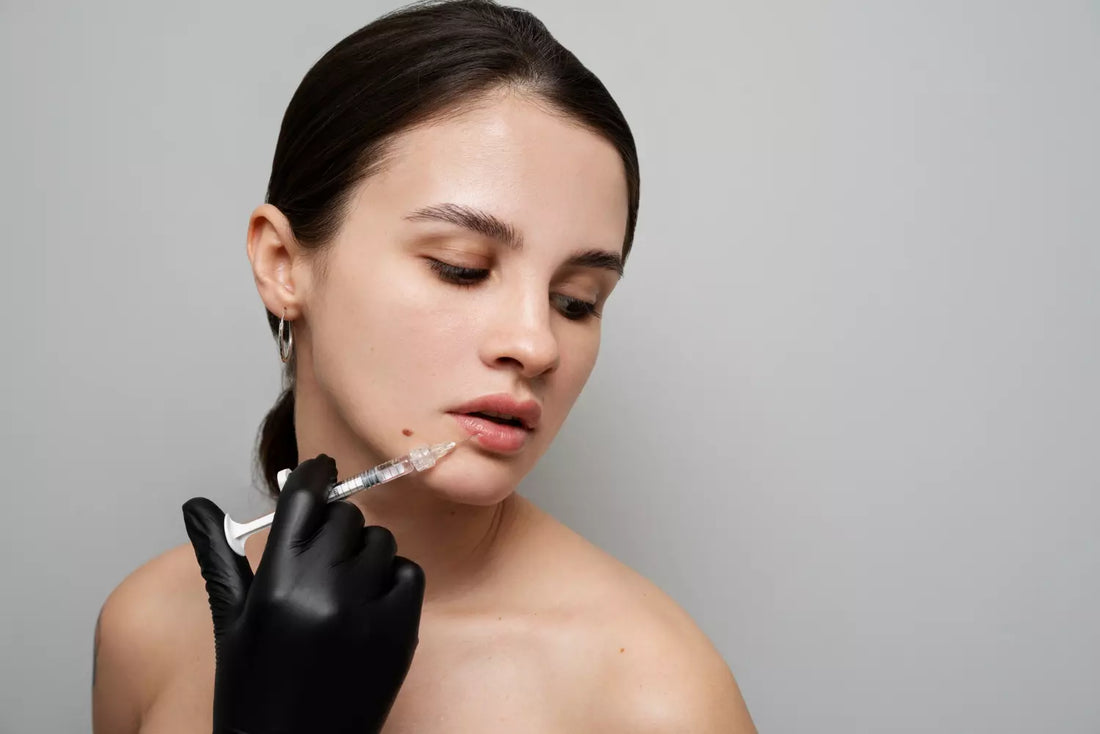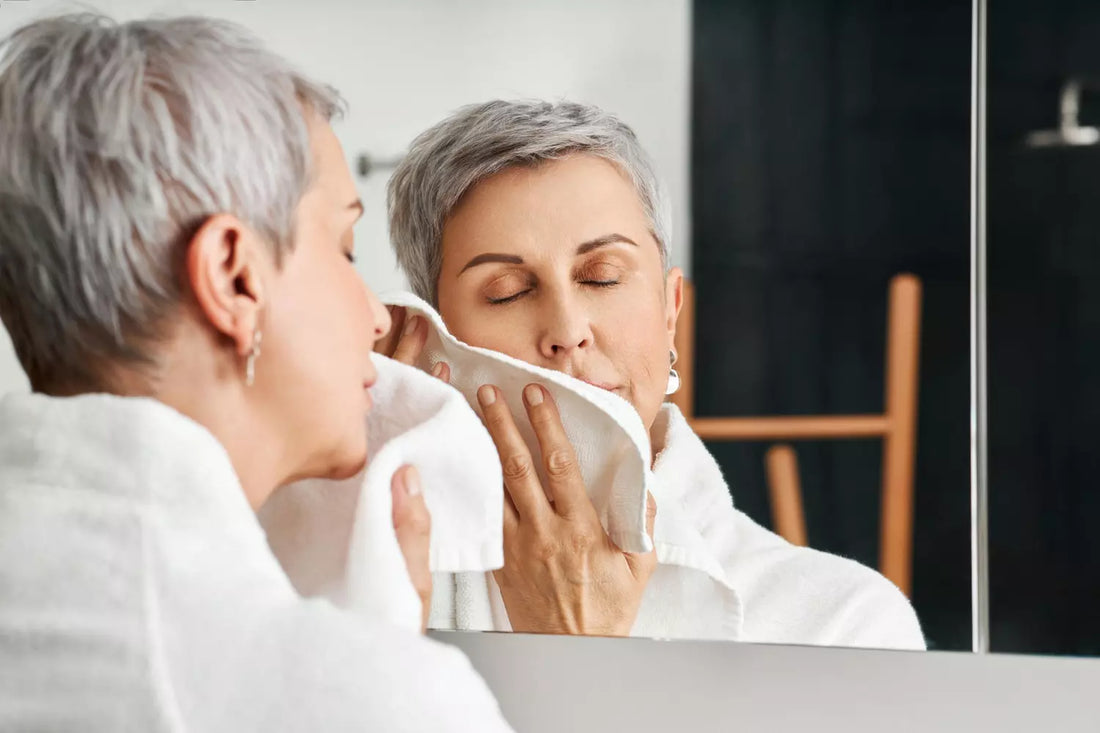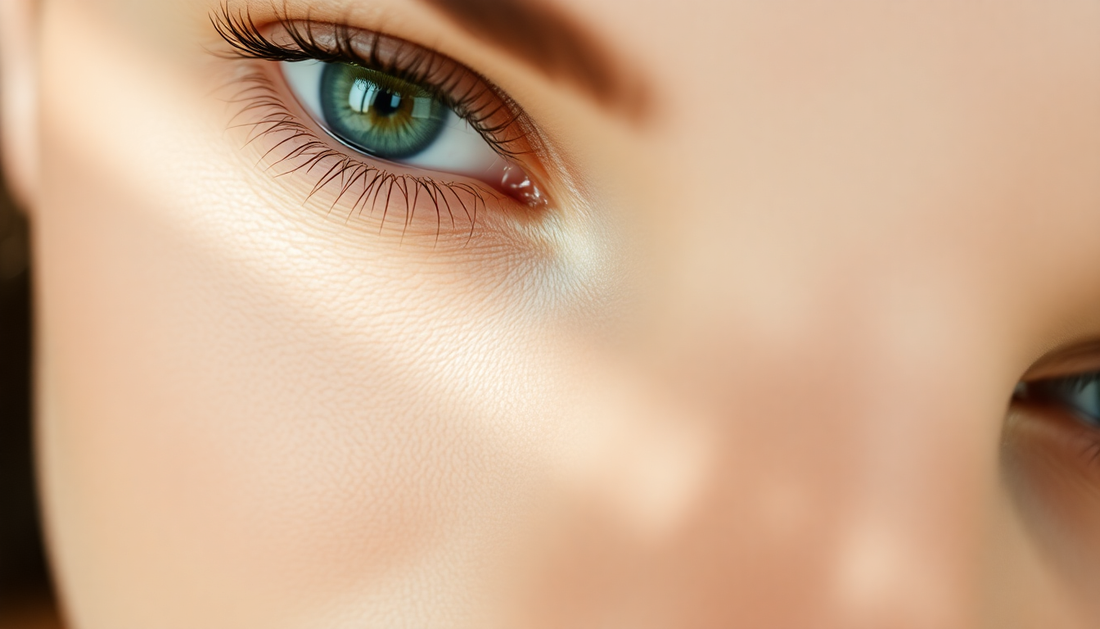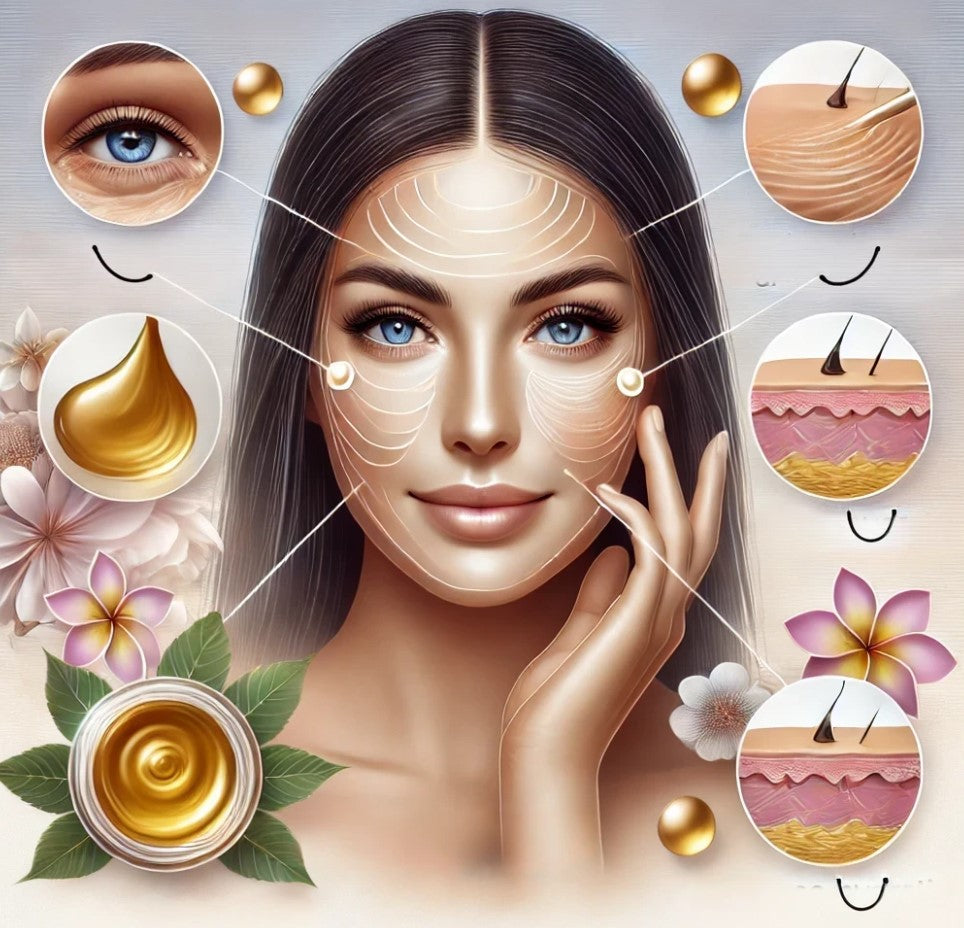
Are sleep wrinkles preventable?
Every morning, when you look in the mirror, you notice these mysterious marks on your face. Lines that seem to appear out of nowhere, unlike your usual expression lines. These temporary traces of waking up actually hide a little-known but very real phenomenon: sleep wrinkles.
Long ignored by the scientific community, these particular wrinkles are now the subject of in-depth studies. The question is no longer whether they exist, but rather how to effectively prevent them.
The mystery of night wrinkles finally solved
For decades, we associated wrinkles solely with skin aging and repeated muscle contractions. This view is now incomplete. Dermatologists now recognize a third category: compression wrinkles, commonly known as sleep wrinkles.
Their mechanism is radically different. While an expression line results from the repeated contraction of facial muscles, a sleep wrinkle is caused by external mechanical pressure. Your pillow, a seemingly harmless companion during your nights, becomes the silent creator of these unwanted marks.
The process is insidious. Night after night, for six to eight consecutive hours, your skin undergoes constant compression. The collagen and elastin fibers, which guarantee skin firmness, gradually deform under this repeated pressure. What begins as a temporary mark gradually transforms into a permanent crease.
Anatomy of a sleep wrinkle
To understand this phenomenon, imagine your skin as a delicate fabric. Every time you crease it in the same way, the wrinkles become more pronounced and harder to smooth out. This is exactly what happens to your face while you sleep.
The distinctive characteristics of sleep wrinkles:
Their orientation: Unlike expression lines, which follow natural lines of muscle tension, sleep wrinkles appear obliquely or diagonally. They create unpredictable patterns, modeled on the creases created by your sleeping position.
Their asymmetry: Revealing your preferred sleeping side, this asymmetry is a major diagnostic clue. If you systematically sleep on your right side, wrinkles will be more pronounced on that side.
Their temporal evolution: Particularly visible upon waking, these wrinkles partially fade during the day. However, with age and the decrease in skin elasticity, they persist for longer and longer.
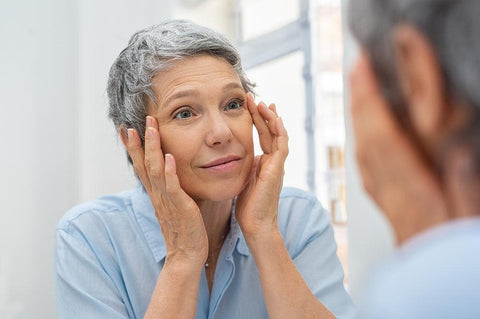
Mapping of risk areas
The forehead and the lion's wrinkle: zone of maximum impact
The forehead region is the most vulnerable area to sleep wrinkles. When you sleep on your side, your forehead comes into direct contact with the pillow, creating intense pressure on this area, which is already stressed by your daily facial expressions.
The frown line, located between the eyebrows, is subject to a dual stress. On the one hand, it forms naturally through repeated contraction of the corrugator muscle (the one that frowns). On the other hand, it is significantly accentuated by nighttime compression, creating a deep and persistent crease.
The neckline: the forgotten area
Often overlooked in skincare routines, the décolleté skin is particularly vulnerable to sleep wrinkles. Thinner than the skin on the face and lacking protective sebaceous glands, it is particularly vulnerable to the effects of compression.
Women who sleep on their sides frequently develop characteristic vertical wrinkles in this area. These lines, sometimes called "neglect wrinkles," can appear as early as the thirties and become more pronounced with age.
The eye contour: extreme fragility
The periorbital skin, remarkably thin (0.5 millimeters compared to 2 millimeters for the rest of the face), does not resist nighttime compression for long. Wrinkles that appear on the temples and lower eyelids are often a direct result of your sleeping position.
This area, already stressed by blinks (around 15,000 per day), accumulates mechanical stress. The result: premature wrinkles that can appear as early as the twenties in side sleepers.
Sleeping positions under surveillance
Side sleeping: the big culprit
Adopted by 70% of the population, the lateral sleeping position is the main risk factor for sleep wrinkles. This position, although recommended for digestion and breathing, concentrates all the pressure on one half of the face.
The mechanism is relentless: your cheek, pressed against the pillow, is subjected to a pressure of several kilograms per square centimeter. The tissues deform, the blood vessels compress, and cellular oxygenation decreases. Repeat this process 2,500 times a year, and sleep wrinkles become inevitable.
Stomach sleeping: the mistake to avoid
Sleeping on your stomach significantly worsens the problem. This position forces the face into an extreme rotation, creating multidirectional tension on the skin. In addition, it often forces you to turn your head to one side, accentuating the asymmetry of the wrinkles.
The consequences go beyond aesthetics. This position can also cause neck pain and disrupt lymphatic circulation in the face, contributing to puffiness and dark circles in the morning.
Back sleep: the theoretical ideal
Lying on your back completely eliminates the risk of sleep wrinkles. The face, freed from any pressure, maintains its natural position throughout the night. This position also promotes better lymphatic and blood circulation, contributing to nighttime skin regeneration.
Unfortunately, only 8% of the population spontaneously adopts this position. Moving from a side position to a back position often requires several weeks of adaptation and the use of specific accessories.

Preventive strategies: a complete arsenal
The textile revolution: beyond silk
Traditionally, silk was considered the miracle solution for sleep wrinkles. Its smooth surface does indeed reduce friction, but this approach remains limited. New synthetic fibers, specially designed to minimize skin adhesion, offer superior performance.
Bamboo microfiber fabrics, for example, have natural antibacterial properties while maintaining exceptional softness. Their ultra-fine fibers literally glide under the skin, significantly reducing compression forces.
Nighttime hydration: much more than just a treatment
Properly moisturized skin is more resistant to deformation. But be careful: not all moisturizers are created equal for nighttime use. Formulas that are too rich can create a "sticky" effect on the pillow, paradoxically exacerbating the problem.
Hyaluronic acid serums, applied 30 minutes before bed, create an invisible protective film. This molecule, capable of retaining 1000 times its weight in water, maintains skin elasticity throughout the night.
Patch technology
Medical silicone patches represent the most significant advance in the prevention of sleep wrinkles. Their principle of action is based on three complementary mechanisms:
The barrier effect: The patch creates an interface between the skin and the pillow, redistributing pressure over a wider surface area. This redistribution reduces the pressure exerted on sensitive areas by a factor of ten.
Occlusive hydration: Medical silicone prevents the evaporation of skin water, creating a hydrating microclimate. This forced hydration improves the skin's plasticity and resistance to deformation.
Circulatory stimulation: The light compression exerted by the patch stimulates local microcirculation, promoting the supply of oxygen and nutrients to skin cells. This stimulation accelerates nighttime repair processes.
Talzzer Innovation: A Scientific Approach
Talzzer patches incorporate the latest advances in materials science. Their medical-grade silicone, identical to that used in cosmetic surgery, offers perfect biocompatibility. Its unique molecular structure allows for optimal adhesion without damaging the skin.
Their ergonomic design adapts perfectly to the curves of the face. Each patch is pre-cut according to specific anatomical zones, ensuring optimal coverage without any pulling effect.
Their reusability (up to 15 uses) makes them a sustainable, economical solution. A simple rinse in cold water is enough to reactivate them, preserving their original adhesive properties.

Optimized usage protocol
Skin preparation: Cleanse your skin with an oil-free product. Oily residue will compromise the adhesion of the patches. Gently pat dry with a clean towel, avoiding rubbing movements.
Sequential application: First, apply your usual serum, then wait 15 minutes before applying the patches. This delay allows for optimal absorption of the skincare product.
Precise positioning: Place the patches on the areas to be protected, carefully smoothing them from the inside out. Avoid air bubbles that could compromise effectiveness.
Morning removal: Gently peel off the patches upon waking, starting at the edges. Rinse immediately with cold water and replace them on their protective backing.
Towards a holistic approach
Preventing sleep wrinkles is part of a comprehensive approach to skin preservation. It perfectly complements traditional anti-aging treatments by targeting a previously overlooked factor in aging.
This preventative approach offers an undeniable economic advantage over corrective treatments. A session of botulinum toxin injections costs between 300 and 500 euros and must be renewed every six months. Talzzer patches, used daily, represent a paltry investment for permanent protection.
The future of skin prevention lies in this detailed understanding of the mechanisms of aging. By identifying and neutralizing each degradation factor, we can hope to preserve the youthfulness of our skin for longer.
Conclusion: Take back control
Sleep wrinkles are no longer inevitable. Unlike wrinkles linked to genetic aging, they are the result of a completely controllable factor. However, controlling them requires a methodical approach and the right tools.
Nighttime represents a third of our existence. Transforming these vulnerable hours into periods of active protection is a major challenge for modern preventive dermatology.
Your skin deserves this special attention. Every night is an opportunity to preserve its youthfulness. Don't let your dreams become nightmares for your skin.
Discover our anti-wrinkle patches that can be used overnight See our anti-wrinkle patches .

